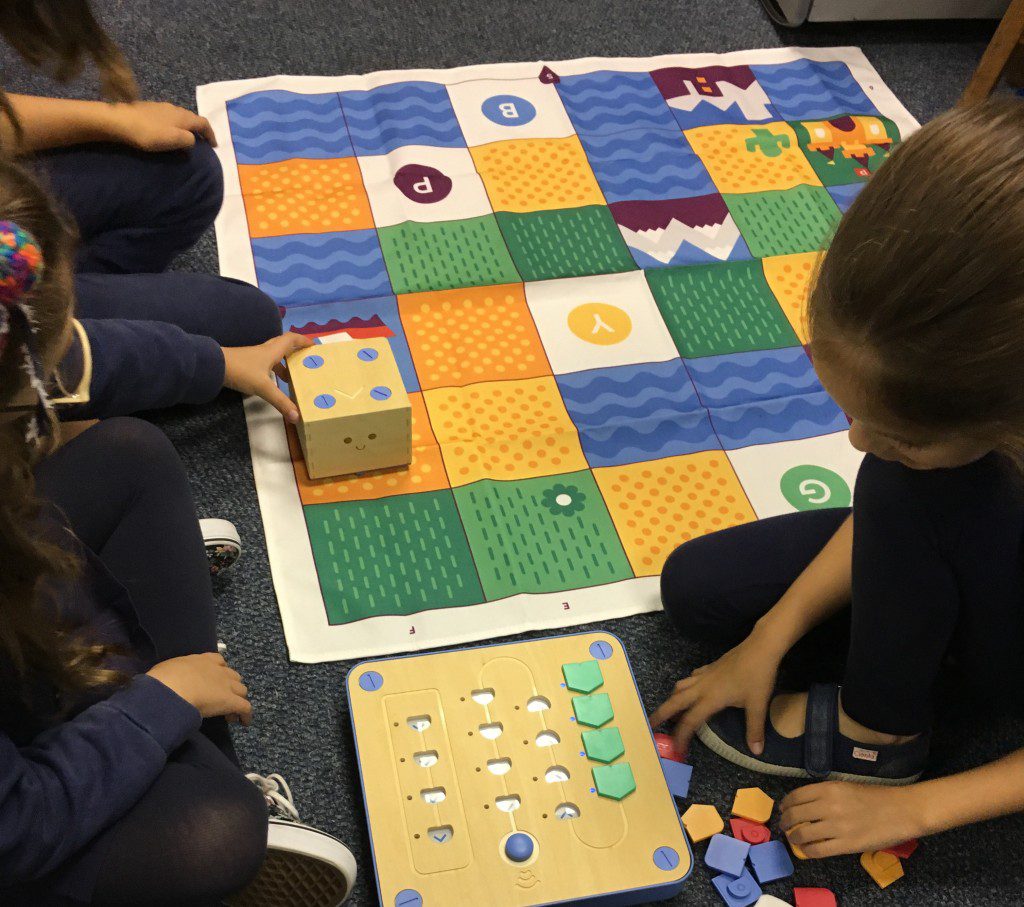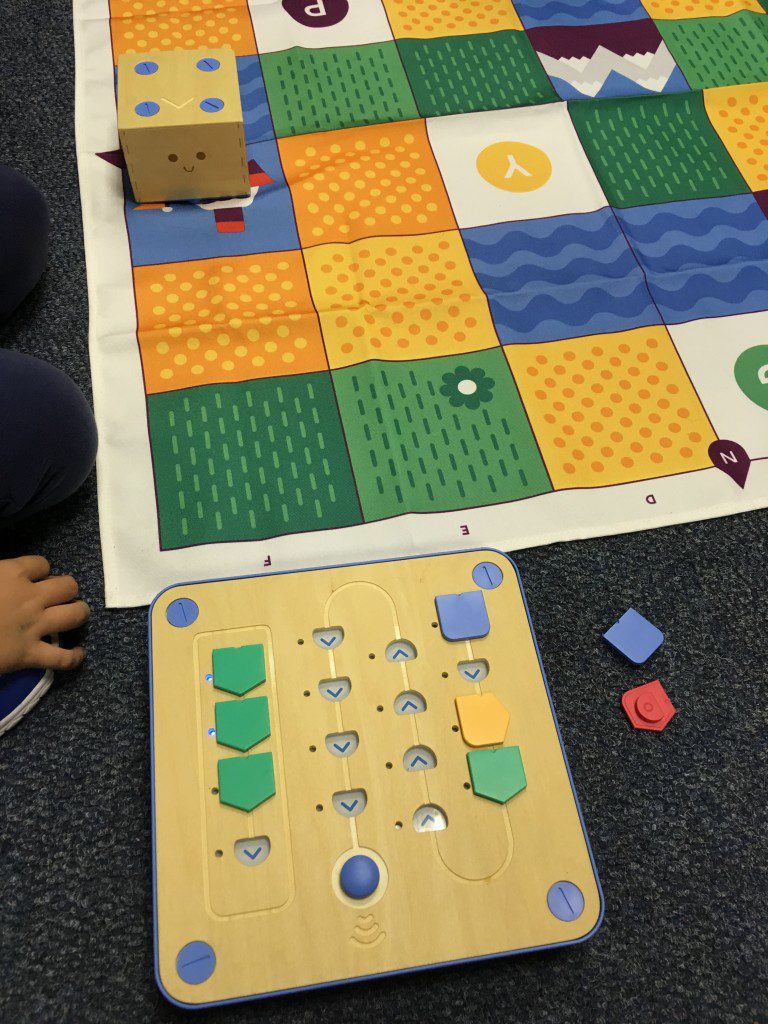Aside from Bee-Bots, there has not been much on the market to help children in Early Years (3 years and older) to develop their computational thinking skills. When I discovered Cubetto therefore, I was keen to purchase one and trial it with our youngest students. After more than 6 months of waiting, the Cubetto finally arrived last week!

The wooden robot comes with a wooden interface board (the remote control unit) in which to place colourful blocks and a fabric grid map. Each of the plastic blocks represents a different directional instruction (forward, left, right and function). As the children insert the blocks into the slots on the board, they create a “queue” of instructions, which are executed as soon as the blue “Go” button is pressed on the interface board.
By placing a sequence of blocks onto the interface board, children are building a chain of sequential instructions in a “queue”, as the robot executes the instructions in order. In doing so, they can begin to understand the concept of a program as a sequence of instructions to be carried out.

One of the things I was particularly impressed by was the blue “function” blocks, which are used to pack more instructions into a single block. A function can be created by inserting a sequence of blocks in the bottom line of the board (the function line), which is executed by the robot every time the blue block is encountered in the main instruction “queue”.
Concluding thoughts…
This is an engaging, robust and well-designed technology for very young children to begin learning to program. The main difference between the Cubetto and other similar technologies on the market is the fact that the interface board does not use any screen – just plastic blocks to be inserted into slots, making it even more intuitive to use.



